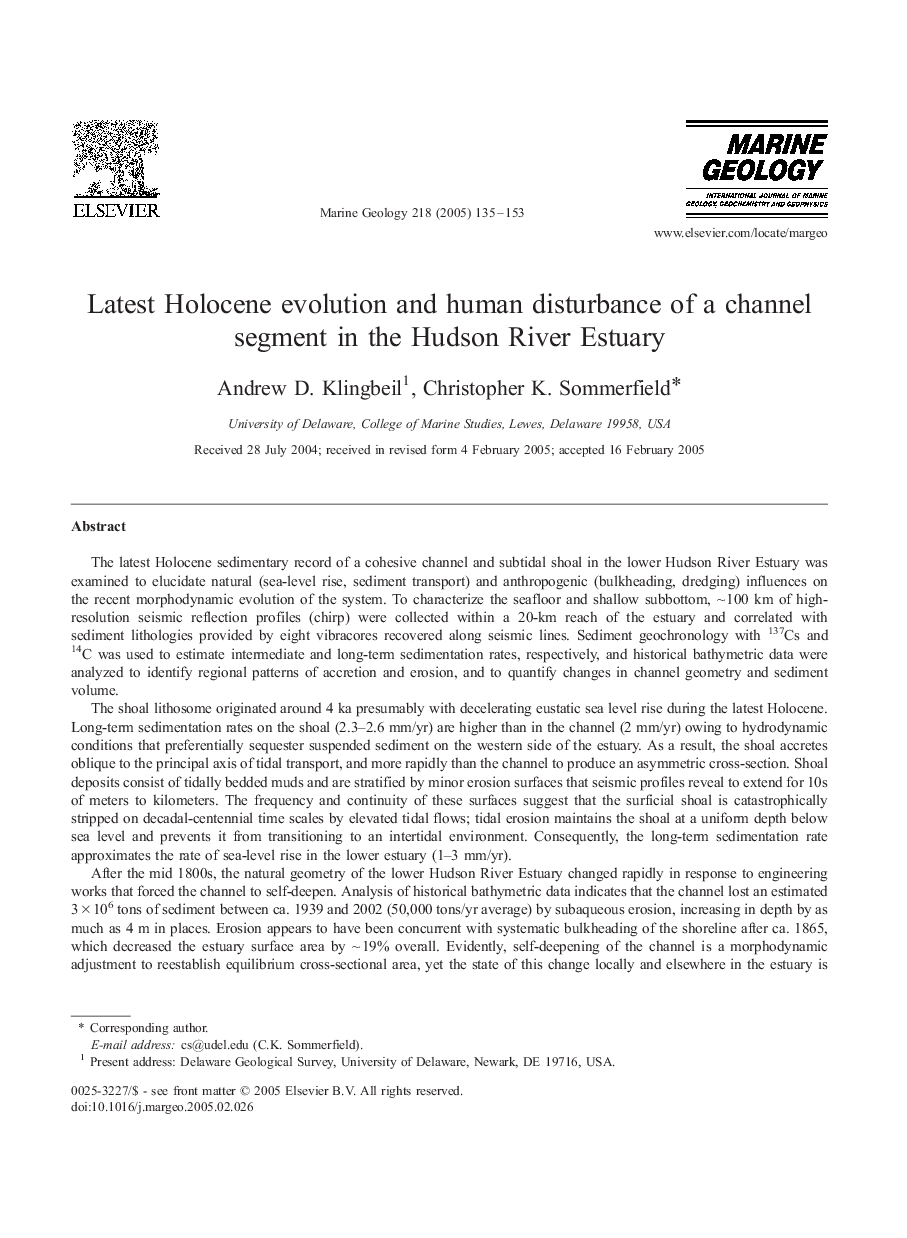| Article ID | Journal | Published Year | Pages | File Type |
|---|---|---|---|---|
| 9532642 | Marine Geology | 2005 | 19 Pages |
Abstract
After the mid 1800s, the natural geometry of the lower Hudson River Estuary changed rapidly in response to engineering works that forced the channel to self-deepen. Analysis of historical bathymetric data indicates that the channel lost an estimated 3 Ã 106 tons of sediment between ca. 1939 and 2002 (50,000 tons/yr average) by subaqueous erosion, increasing in depth by as much as 4 m in places. Erosion appears to have been concurrent with systematic bulkheading of the shoreline after ca. 1865, which decreased the estuary surface area by â¼Â 19% overall. Evidently, self-deepening of the channel is a morphodynamic adjustment to reestablish equilibrium cross-sectional area, yet the state of this change locally and elsewhere in the estuary is unknown. Subaqueous erosion documented in this study is a significant source of sediment with implications to the sediment budget and environmental quality of the Hudson River Estuary.
Related Topics
Physical Sciences and Engineering
Earth and Planetary Sciences
Geochemistry and Petrology
Authors
Andrew D. Klingbeil, Christopher K. Sommerfield,
